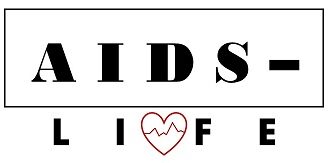How is AIDS different from HIV infection?
What is HIV?
HIV (Human Immunodeficiency Virus) is a virus that damages the immune system, which helps the body fight infections. Once in the body, HIV infects and kills CD4 cells (or T cells), which are responsible for the immune system's response to various infections. Over time, as HIV kills more CD4 cells, the body is more likely to develop various types of infections and cancers.
The main transmitters of HIV infection are body fluids. These include:
- blood;
- sperm;
- vaginal and rectal fluids;
- breast milk.
However, the human immunodeficiency virus does not spread in the air or water, or through casual contact.
HIV is a lifelong disease and there is currently no cure, although many scientists are working to find one. However, with medical care, including a treatment called antiretroviral therapy , it is possible to fight HIV and live with it for many years.
Without treatment, a person with HIV can develop a serious disease called AIDS. At this point, the immune system is too weak to fight other diseases and infections. Therefore, without treatment, life expectancy for AIDS is about three years. But with antiretroviral therapy, HIV can be well controlled, and life expectancy can be almost the same as that of healthy people.
What is AIDS?
AIDS (Acquired Immune Deficiency Syndrome) is a disease that can develop in people with HIV. In other words, AIDS is the most recent stage of the development of HIV. However, the presence of the immunodeficiency virus in a person does not mean that he will develop AIDS.
HIV kills CD4 cells. In a healthy adult, the number of such cells ranges from 500 to 1500 per mm3. If a person with HIV has a CD4 cell count that falls below 200 per mm3, they are diagnosed with AIDS.
A person with HIV may also be diagnosed with AIDS if they develop an opportunistic infection or cancer.
Opportunistic infection is a bacterial, viral, fungal, or parasitic infection that does not develop in individuals with a healthy immune system and affects almost all organ systems.
Without treatment, HIV can develop into AIDS within 10 years. However, without proper treatment, life expectancy after an AIDS diagnosis is about 3 years. However, this life expectancy may be significantly shorter if the patient develops a severe opportunistic disease.
If AIDS develops, it means that the immune system is seriously weakened. It has been weakened to the point that it can no longer fight off most diseases and infections. This makes a person vulnerable to a wide range of diseases such as:
- pneumonia;
- tuberculosis;
- oral thrush (fungal infection in the mouth or throat);
- cytomegalovirus (CMV) is a type of herpes virus;
- cryptococcal meningitis (fungal infection of the brain);
- toxoplasmosis (a brain infection caused by a parasite);
- cryptosporidiosis (infection caused by an intestinal parasite);
- cancer, including Kaposi's sarcoma (KS) and lymphoma.
The shortened life expectancy associated with untreated AIDS is not a direct result of the syndrome itself. Rather, it is the result of diseases and complications arising from weakened immunity.
HIV infection and AIDS: what is the connection?
In order to get AIDS, a person must become infected with HIV. But having HIV does not necessarily mean that the patient will develop AIDS.
The human immunodeficiency virus occurs in three stages:
- stage 1: acute stage, first few weeks after transmission;
- stage 2: clinical latency or chronic stage;
- stage 3: AIDS.
As HIV reduces the number of CD4 cells, the immune system becomes weaker. A healthy adult's CD4 count ranges from 500 to 1500 per mm3. In a person diagnosed with AIDS, the number of such cells is below 200 per mm3.
How quickly HIV disease progresses through the chronic stage varies greatly from person to person. Without treatment, it can last up to ten years before progressing to AIDS. With proper treatment, an HIV-infected person may never progress to stage 3 of the disease.
Thus, the life expectancy of people with HIV infection when treated early with antiretroviral therapy is often the same as that of healthy people. Although there is no cure for AIDS, treatment prescribed by a doctor can increase a person's CD4 cell count to the point that they will not progress to AIDS. In addition, treatment usually helps treat opportunistic infections.




